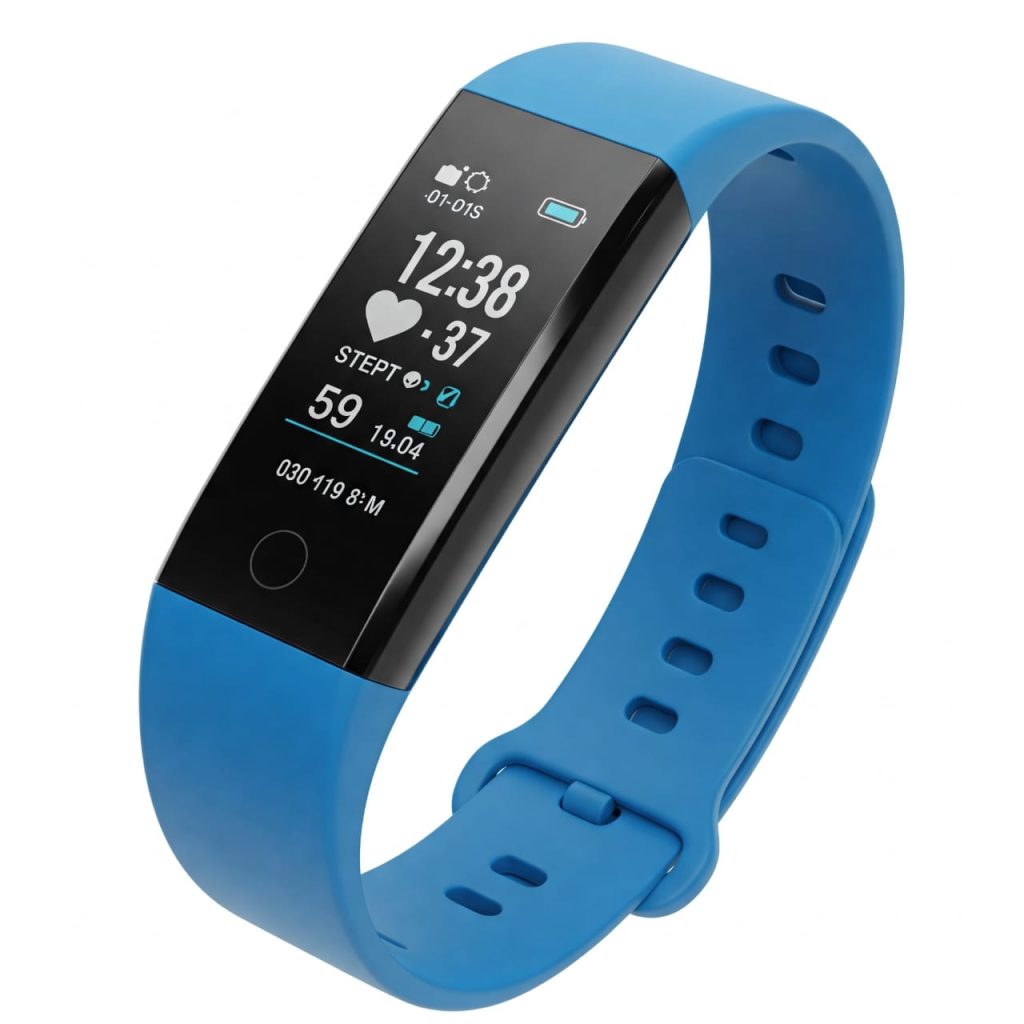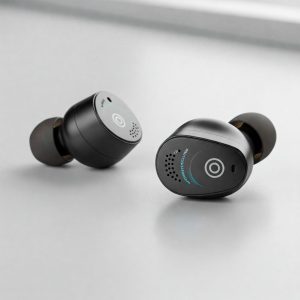INTODUCTION:
The Day My Couch Declared War on My Waistline Social media feeds display ideal

workout videos with nutritious meals as you scroll through your screens. Your couch directly stares at you as the pizza box taunts you silently. You have experimented with numerous dieting attempts but you also purchased gym memberships together with a television-advertised ab roller. Then—bam! Your exploration leads you to discover fitness trackers which are compact wrist devices that aim to transform lazy wall-sitting into a marathon of improved wellness. Step counting uncertainty along with calorie expenditure estimation now belong to the past due to modern fitness trackers. The modern fitness tracker combines attractive design with intelligent features and provides considerable health data insight. You risk feeling like you wear an ankle monitor if you try to choose between smartwatches and bands and clip-ons as your fitness tracker option. A digital personal trainer guides you through this guide which offers helpful advice without any criticism. Let’s get moving! What Are Fitness Trackers? Fitness trackers serve dual purposes for monitoring your health status thereby leading your couch toward possible destruction. Fitness trackers offer complete health monitoring services in addition to counting steps while providing assistance for fitness goal achievement. Fitness trackers serve as your motivation and accountability system which support you through your fitness tasks. A Quick History Lesson: Wearable devices during the early 2000s went beyond pedometers to become step and calorie monitoring devices. Fitness tracking features arrived in smartwatches alongside smartphone notifications and GPS during the 2010s.

6 Types of Hearing Aids, Each Suited to a Particular User Group * Behind-the-Ear (BTE) BTE models serve people with serious hearing loss requirements and those who need a wide set of features. Users receive three main advantages from this hearing aid technology including its power along with versatility and easy operational design. * Cons: More visible than other types. * Top Pick: Oticon More ($1500-3000) * Receiver-in-Canal (RIC) This device provides exceptional service to people with mild to moderate hearing loss and those who want unnoticeable devices. * Pros: Comfortable, discreet, and natural sound. Using small-sized hearing aid components might require more tedious handling. The Phonak Audéo Paradise stands as the top recommendation with price range from $1800 to $3500. * In-the-Ear (ITE) People with mild or moderate degrees of hearing impairment will find this device ideal along with individuals who struggle with manual dexterity. The shell incorporates everything together while having a customized shape for comfort. These devices have an increased susceptibility to collect earwax deposits over time. * Top Pick: Starkey Picasso ($2000-4000) * In-the-Canal (ITC) ITC hearing aids provide a suitable option for people who have mild hearing impairment and want unnoticeable hearing devices. * Pros: Smaller than ITE, custom-fit. Small size restricts possible features included within the device. Signia Silk X stands as the top recommendation in the price category ranging from $1500 to $3000. * Completely-in-Canal (CIC) People with modest to average hearing loss should choose this model because it offers the maximum level of discretion and suits their hearing loss range. * Pros: Virtually invisible, custom-fit. The main disadvantages of this model include its short battery runtime and upper limit of available features. The Widex Moment CIC represents the top hearing aid choice at a price range from $2000 to $4000. * Over-the-Counter (OTC) These devices suit people who have mild to moderate hearing loss as well as those on a budget. * Pros: Affordable, readily available. The hearing aid’s main disadvantages include restricted customization options and inadequate performance when used by patients with specific types of hearing loss. The Top Pick in the market is Lexie B2 Powered by Bose which costs between $900-1000. How to Choose the Right Hearing Aid The magnitude of hearing loss ranges from mild to profound since classification includes four degrees. * Lifestyle Needs: Active, sedentary, social, or solitary. You should choose your hearing aid budget from OTC prices through mid-range options as well as high-end models. * Technology Features: Bluetooth, rechargeable, noise reduction, or AI. In-ear and behind-the-ear devices provide both comfort and ideal fitting properties. * Dexterity: Ease of handling small components. * Personal Preferences: Style and discretion. Pro Tip: Consult an audiologist for a comprehensive hearing
test and personalized recommendations.
Top 5 Hearing Aids of 2024
| Product | Price | Best For | Why We Love It |
| Oticon More | $1500-3000 | Severe Hearing Loss | Advanced AI, natural sound, and powerful features. |
| Phonak Audéo Paradise | $1800-3500 | Mild to Moderate Loss | Bluetooth connectivity, exceptional sound clarity, and comfort. |
| Starkey Picasso | $2000-4000 | Dexterity Issues | Custom-fit, easy to handle, and all-in-one design. |
| Lexie B2 Powered by Bose | $900-1000 | Budget Buyers | OTC affordability, Bose sound quality, and app control. |
| Signia Silk X | $1500-3000 | Maximum Discretion | Virtually invisible, comfortable, and instant fit. |
DIY Hacks for Hearing Aid Care
Daily Cleaning: Wipe down your hearing aids with a soft, dry cloth.
Regular Wax Removal: Use a specialized tool to remove earwax buildup.
Battery Maintenance: Replace batteries regularly or recharge as needed.
Storage: Keep hearing aids in a dry, safe place when not in use.
FAQs: Your Burning Questions, Answered
Q: Can hearing aids restore my hearing completely?
A: Hearing aids enhance sound, but they don’t restore normal hearing.
Q: How often should I replace my hearing aids?
A: Typically every 3-5 years, depending on technology and wear.
Q: Are hearing aids covered by insurance?
A: Coverage varies; check with your insurance provider.
Q: Can I wear hearing aids while exercising?
A: Some models are designed for active lifestyles; check for water resistance.
Q: How do I adjust to wearing hearing aids?
A: It takes time; start with short periods and gradually increase usage.
Why Trust Us?
We’ve consulted with audiologists and hearing aid specialists.
We’ve researched and compared numerous hearing aid models.
We’ve considered user reviews and expert opinions.
Ready to Turn Up the Volume on Life?
Your world is full of sounds waiting to be rediscovered. The right hearing aids can help you reconnect with the moments that matter.




